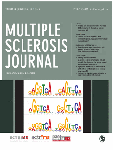Anti-EBV Serology, HLA-DR Risk Profiles May Help Identify MS
Adding anti-EBV levels to HLA-DR risk profiles may significantly help discriminate MS cases from controls
Epstein-Barr virus (EBV) serology and human leukocyte antigen (HLA)-DR alleles may significantly help discriminate multiple sclerosis (MS) cases from controls, according to a case-control study published Online First July 25 in the Multiple Sclerosis Journal (Strautins et al., 2013).
“Risk factors for [MS] include [HLA-DR] and [EBV]-specific antibody responses, including an epitope within EBV nuclear antigen 1 (EBNA-1),” wrote Kaija Strautins of the Institute for Immunology and Infectious Diseases at Murdoch University in Perth, Australia, and colleagues. “[EBNA-1] is a particularly important viral antigen in MS pathogenesis. [A]nti-EBNA-1 antibodies have been implicated in oligoclonal band formation and EBNA-1-specific effector T-cells capable of cross-reacting with myelin antigens have been identified.”
Using a population-based cohort of 426 persons with MS and 186 healthy controls, the investigators examined associations between MS risk and anti-EBV antibody levels, HLA-DR profiles derived from sequence-based methods, sex, and age.
Compared with controls, persons with MS had higher levels of antibodies against epitope-specific and polyspecific EBNA-1 and viral capsid antigen (VCA; all p < 10–15).
 Anti-EBNA-1 and anti-VCA antibody levels, protective HLA-DR*04/07/09 alleles, and sex were all independent predictors of MS, based on regression analyses (all p < 0.003). In the resulting model, sensitivity for distinguishing cases and controls was 92%; specificity 64%; odds ratio > 20). Including EBV serology levels in the model attenuated the strong influence of high-risk HLA-DR alleles.
Anti-EBNA-1 and anti-VCA antibody levels, protective HLA-DR*04/07/09 alleles, and sex were all independent predictors of MS, based on regression analyses (all p < 0.003). In the resulting model, sensitivity for distinguishing cases and controls was 92%; specificity 64%; odds ratio > 20). Including EBV serology levels in the model attenuated the strong influence of high-risk HLA-DR alleles.
“The ability to discriminate MS cases and controls can be substantially enhanced by including anti-EBV serology as well as HLA-DR risk profiles,” the study authors wrote. “These findings support the relevance of EBV-specific immunity in MS pathogenesis and implicate both HLA-dependent and HLA-independent immune responses against EBNA-1 as prominent disease risk factors.”
Validation needed
Limitations of this study include lack of validation of the model in an independent cohort, as classification sensitivity and specificity are typically lower in a validation data set.
Earlier research has shown that higher anti-EBNA-1 antibody levels are strongly correlated with MS risk, which appears to reflect disease predisposition. Anti-EBNA-1 antibody levels may be detected years before onset of MS symptoms (Munger et al., 2011) and remain elevated but stable before and after onset of clinically isolated demyelinating syndromes (Décard et al., 2012).
A recent genomewide study of quantitative anti-EBNA-1 antibody levels has shown a heritable component of ~43%, compared with a local environment component of only ~4%. In addition, significant genetic associations occurred almost exclusively within the HLA region (Rubicz et al., 2013), corroborating the association of EBNA-1 antibody levels with HLA-DR alleles in cases and controls in the present study.
“The discriminatory capacity of our final model … certainly argues for the relevance of EBV-specific immunity in MS pathogenesis, as well as for the potential development of diagnostic and treatment strategies that specifically target this aspect of disease susceptibility,” the study authors conclude.
Key open questions
- What will be the diagnostic performance of the investigators’ model in an independent validation cohort?
- How do anti-EBNA-1 serological profiles change over the course of MS disease progression?
- How can understanding of EBV-specific immunity be used to develop novel diagnostic and treatment strategies?
Disclosures
The McCusker Charitable Foundation and the Trish Multiple Sclerosis Research Foundation supported this study. Seven of the study authors reported having no financial disclosures. One author (A.K.) received speaker honoraria and scientific advisory board fees from Bayer, Biogen Idec, Novartis, Sanofi Aventis, and Merck, and another author (W.C.) received speaker honoraria from and served as a member of scientific advisory boards of Bayer Schering, Novartis, Merck Serono, Sanofi, and Biogen Idec.


